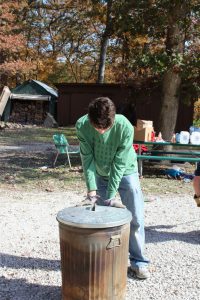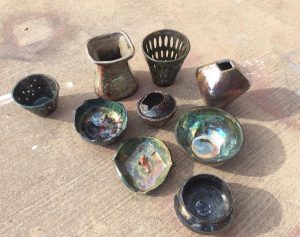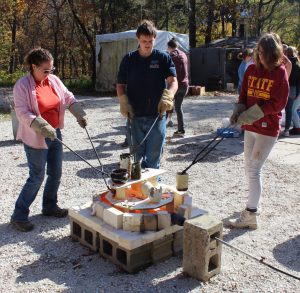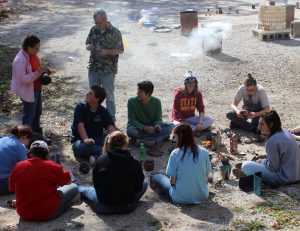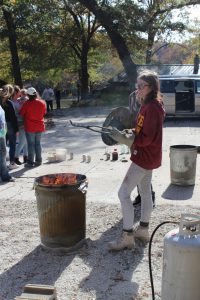The raku firing process is an ancient technique that was discovered in Korea, but was refined by the Japanese during the 16th century and finally brought to the United States by ceramic artist Paul Soldner in the 1950’s. The meaning of the word raku is “joy and happiness.” The raku process is different from all other ceramic firing processes in that pottery is fired to its mature temperature (around 1700 degrees Fahrenheit) and then removed from the kiln using a long pair of tongs and placed into a waiting barrel full of combustible material (e.g., paper, sawdust). The barrel is then closed, and the heat from the pottery consumes all or most of the available oxygen causing a reduction atmosphere. This reduction causes the carbon from the burning material to imbed into the glazes and clay. Due to the rapid cooling, the pottery undergoes thermal shock that causes fine cracks in the glaze. These cracks allow the clay body beneath to be embedded with carbon from the smoke, which results in beautiful black crackle patterns. The process is also known for the beautiful copper metallic finishes it produces. The pots are allowed to cool and are removed from the barrel, still covered in soot, which is removed to reveal the somewhat unpredictable glaze effects. Opening the cans after reduction process is filled with surprise and the kids can be seen maneuvering around the still hot pottery examining all the effects of the firing process.
